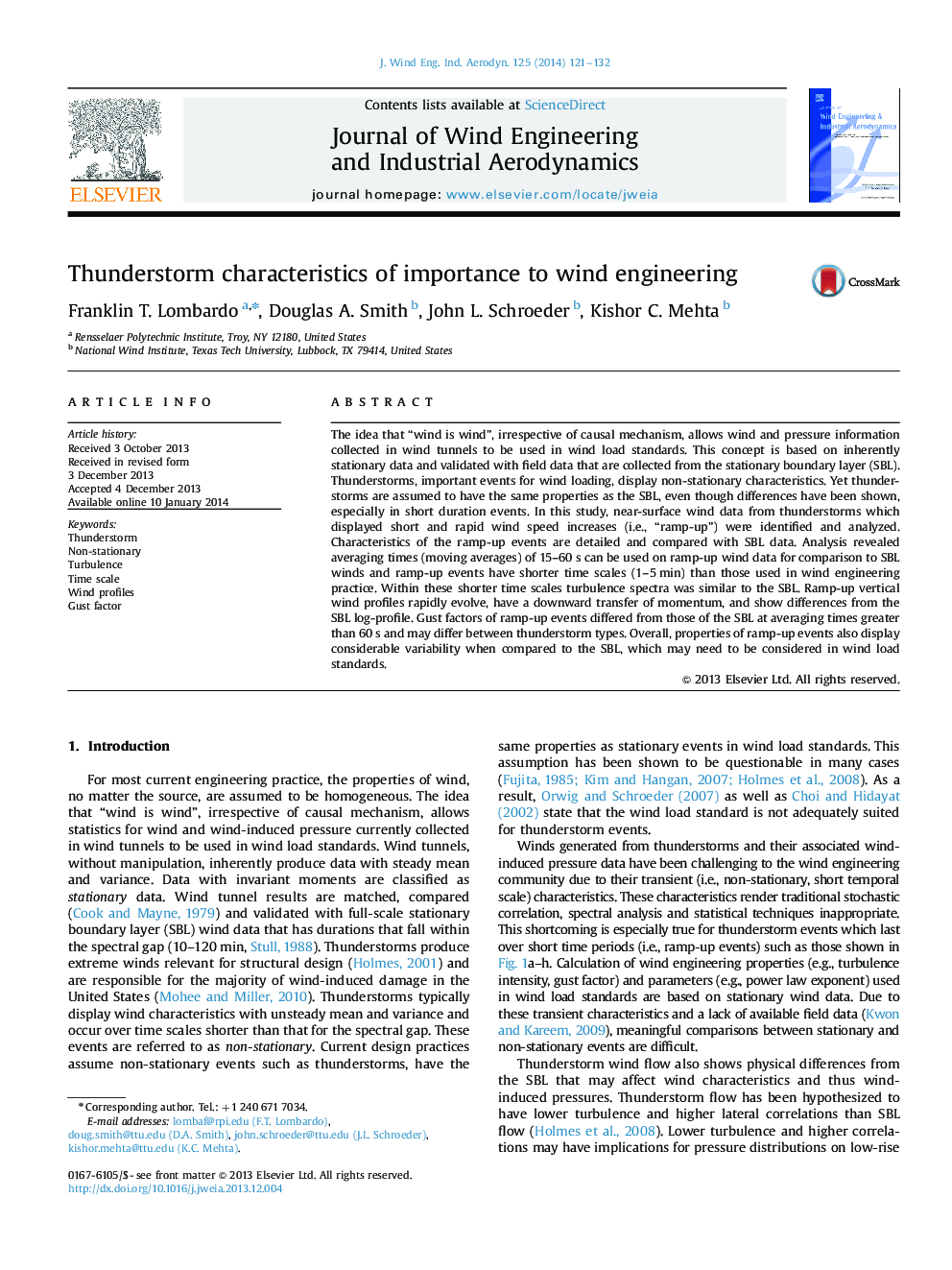| Article ID | Journal | Published Year | Pages | File Type |
|---|---|---|---|---|
| 6757737 | Journal of Wind Engineering and Industrial Aerodynamics | 2014 | 12 Pages |
Abstract
The idea that “wind is wind”, irrespective of causal mechanism, allows wind and pressure information collected in wind tunnels to be used in wind load standards. This concept is based on inherently stationary data and validated with field data that are collected from the stationary boundary layer (SBL). Thunderstorms, important events for wind loading, display non-stationary characteristics. Yet thunderstorms are assumed to have the same properties as the SBL, even though differences have been shown, especially in short duration events. In this study, near-surface wind data from thunderstorms which displayed short and rapid wind speed increases (i.e., “ramp-up”) were identified and analyzed. Characteristics of the ramp-up events are detailed and compared with SBL data. Analysis revealed averaging times (moving averages) of 15-60Â s can be used on ramp-up wind data for comparison to SBL winds and ramp-up events have shorter time scales (1-5Â min) than those used in wind engineering practice. Within these shorter time scales turbulence spectra was similar to the SBL. Ramp-up vertical wind profiles rapidly evolve, have a downward transfer of momentum, and show differences from the SBL log-profile. Gust factors of ramp-up events differed from those of the SBL at averaging times greater than 60Â s and may differ between thunderstorm types. Overall, properties of ramp-up events also display considerable variability when compared to the SBL, which may need to be considered in wind load standards.
Related Topics
Physical Sciences and Engineering
Energy
Renewable Energy, Sustainability and the Environment
Authors
Franklin T. Lombardo, Douglas A. Smith, John L. Schroeder, Kishor C. Mehta,
